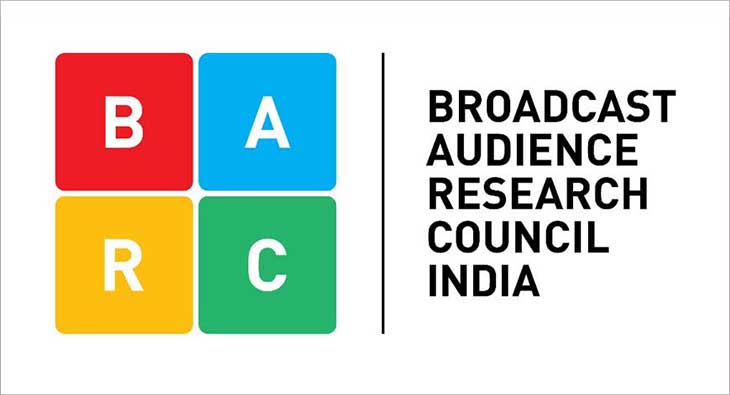[ad_1]
After a controversial 2020, the television audience measurement body Broadcasters Audience Research Council (BARC) India continued to face challenges and controversies in 2021. The TRP scam that came to light in 2020 has continued to wreak havoc for much of 2021 with the WhatsApp conversation between Republic TV founder and editor Arnab Goswami and former BARC India CEO Partho Dasgupta are coming out of the public domain. The leaked conversation raised many uncomfortable questions about how BARC India operated when it was in charge of its affairs. Dasgupta, who was arrested in December 2020 for his alleged role in the TRP manipulation case, was released on bail by the Bombay High Court in March.
Another highlight of BARC India was the departure of media veteran Sunil Lulla as CEO. Lulla, who replaced Dasgupta in October 2019, has made a quiet outing in less than two years. He was eventually replaced by advertising industry veteran Nakul Chopra, who previously served as BARC India Chairman of the Board in 2018-19. Lulla’s exit and Chopra’s entry came at a time when BARC India’s credibility remained in question.
In addition, the issue of resuming television news ratings has not been resolved due to the differences between the news broadcasters and the digital association (NBDA) headed by Rajat Sharma and the Federation of Broadcasters. information (NBF) led by Arnab Goswami. The blackout began in October 2020 after Mumbai police discovered the TRP scam. Information and Broadcasting (I&B) Minister Anurag Thakur, who took office in July 2021, recently said ratings will pick up after the recommendations of the four-member panel report are implemented on the revision of the guidelines on television scoring.
The committee headed by Prasar Bharati CEO Shashi Shekhar Vempati submitted its report on January 12, 2021. In its report titled “Guidelines for TV Rating Agencies in Indiaâ€, the committee recommended specific measures to provide independent oversight at BARC India, mandate the use of Return Channel Data (RPD), increase competitiveness in the TV rating space and set up a specialized regulatory mechanism for the same. The ministry also sought advice from industry bodies such as the Indian Broadcasting and Digital Foundation (IBDF), NBDA and NBF on the report.
The Standing Committee on Communications and Information Technology chaired by Congressman Shashi Tharoor in its 27e The report on “Ethical Standards in Media Coverage†strongly criticized the television audience measurement system existing under BARC India, noting that it is heavily biased in favor of urban areas. He also called on the MIB to make the system more transparent by giving equal weight to urban and rural areas.
The committee also said it was not satisfied with the current TRP measurement system. He also drew the attention of the Ministry of Information and Broadcasting (MIB) to recently reported episodes of TRP manipulation by some TV stations. “This has put a big question mark on the objectivity, accuracy, efficiency and transparency of the current system and indicates how the odds can be manipulated by certain channels in collusion with BARC officials,” notes the report.
BARC India’s Code of Conduct for Addressing Audience Malpractice entered into force on January 11, 2021. The purpose of the Code of Conduct is to prohibit, deter, prevent and eliminate related misconduct. to and leading to falsification of assessments by influencing / or attempting to influence the households in the panel.
In June, the audience measurement organization changed the publication format of audience data that was publicly available on its website. In a surprise move, the measuring agency stopped publishing data by gender for non-subscribers. In addition, it only publishes audience data for the top 10 channels across India, in addition to the top 5 channels in each state. National data lacks usefulness and context, experts say, as TV channels are judged on the basis of their performance against other channels of the genre in which they operate.
BARC India, in collaboration with the BARC Technical Committee (TechComm), announced the publication of “TV Universe Estimates 2020” (TV UEs) which play an important role in structuring the BARC India sampling plan and to ensure that the selected panel represents a true microcosm. from India.
According to BARC India’s TV UEs 2020, the number of TV households increased by 7% to 210 million from 197 million in 2018. Simultaneously, viewers also increased by 6.7% to reach 892 million compared to 836 million in 2018, a increase of 57 million individuals in 2020. Another interesting trend has been the growth of 7% of the female television owner population while the male population has increased by 6%. In terms of age groups, the highest growth was observed in the “children†category (2 to 14 years) at 9%.
Read more news on (internet advertising India, internet advertising, India advertising, digital advertising India, media advertising India)
For more updates, be socially connected with us on
Instagram, LinkedIn, Twitter, Facebook and Youtube
[ad_2]

